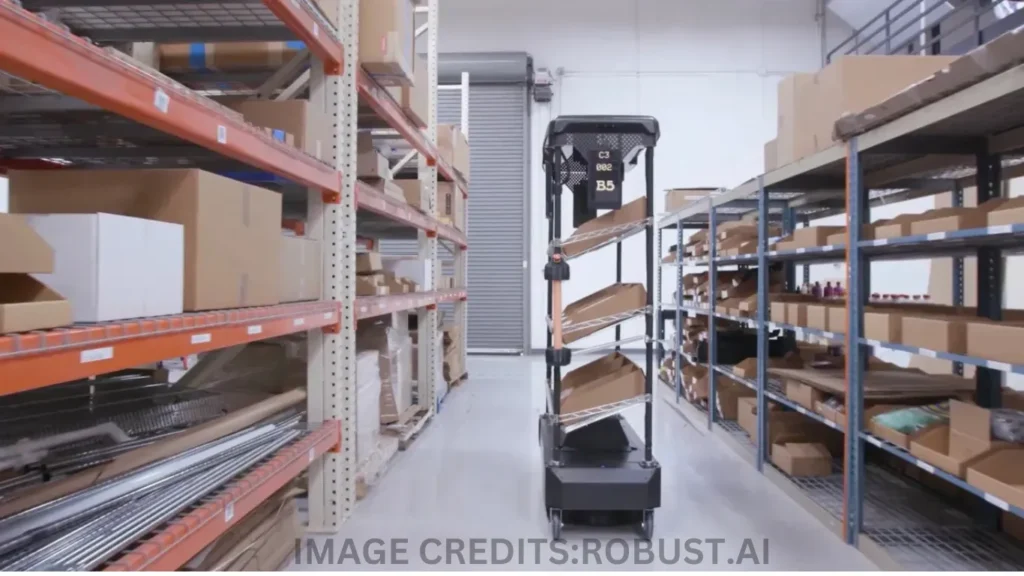When you step into Robust AI’s demo warehouse in San Carlos, California, two things stand out about their new robot, Carter Pro.

1. Familiar and Practical Design
The shelves Carter Pro navigates are nothing fancy — they’re standard, modular, off-the-shelf units you’d find in almost any warehouse. That’s on purpose. The team at Robust AI wants their robot to fit seamlessly into existing workspaces.
2. A Human-Friendly Robot
The second thing you’ll notice isn’t about Carter’s design but how people interact with it. Employees at Robust pick up and move Carter without hesitation. This small detail makes a big difference. It’s not just a robot you avoid bumping into; it’s one you can easily handle if needed.
Safety Comes First
Robots like Carter are designed to work alongside humans, but safety is still a concern. It’s not new, either. Even something as common as electric forklifts, around since the 1930s, can cause workplace injuries.
What makes Carter different? You can physically interact with it. If you need to move it, the robot senses your touch and adjusts. It even has a bright orange handlebar for easy, one-handed control. Designing this level of responsiveness is tricky, but it’s essential for creating a safe and collaborative workspace.
A Collaborative Future
Robust AI’s approach isn’t surprising when you look at its founders. CTO Rodney Brooks previously founded Rethink Robotics, a company that focused on building robots to work with people, not replace them.
Despite all the talk about robots taking over jobs, we’re still far from that reality. For now, humans and robots will continue working side by side. That’s why tools like Carter are so important — they help bridge the gap safely and effectively.
Cameras Over Lidar
One standout feature of Carter Pro is its use of cameras instead of lidar for navigation. More and more autonomous mobile robots (AMRs) are taking this route. Cameras are cheaper, which helps keep costs down, but they also offer some practical advantages in busy warehouse environments.
Early Testing and Partnerships
Before rolling out the final version, Robust AI tested Carter Pro with several partners. Their first big customer is DHL, the global logistics giant. It’s a significant partnership, but Robust is careful not to rely too heavily on one company.
“We’re not just doing business with DHL,” Brooks explains. He points to Walmart’s past reliance on robotics companies, which backfired when they pulled the plug. Robust wants to avoid that trap by diversifying its customer base.
What’s Next for Carter Pro?
Robust AI’s mission is clear: create robots that work well with humans in real-world environments. Carter Pro is just the beginning, but it’s already showing how robots and people can work together safely and efficiently in modern warehouses.

